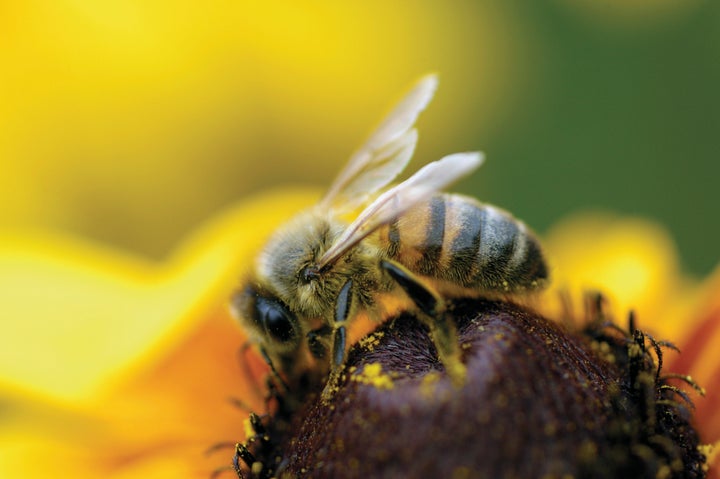
Wild bees, crucial pollinators for many crops, are on the decline in some of the main agricultural regions of the United States, according to scientists who produced the first national map of bee populations and identified numerous trouble spots.
The researchers on Monday cited 139 counties as especially worrisome, with wild bee numbers decreasing while farmland for crops dependent on such pollinators is increasing.
The counties included agricultural regions of California such as the Central Valley, the Pacific Northwest, the upper Midwest and Great Plains, west Texas and the southern Mississippi River valley.
The counties grew crops such as almonds, pumpkins, squashes, blueberries, watermelons, peaches and apples that are highly dependent on pollinators, or had large amounts of less-pollinator-dependent crops including soybeans, canola and cotton.
Taylor Ricketts, director of the University of Vermont's Gund Institute for Ecological Economics, said the 139 counties represent 39 percent of the pollinator-dependent crop area of the United States and most likely will face inadequate pollination in the future.
"Wild bee declines may increase costs for farmers and, over time, could even destabilize crop production," Ricketts said.
Some crops such as corn and wheat do not need pollinators.
The study estimated that wild bee numbers diminished in 23 percent of the continental United States between 2008 and 2013 in a trend driven by conversion of their natural habitat into farmland including corn for biofuel production.
Pesticides and diseases were cited as other factors behind the declines among the roughly 4,000 U.S. species of wild bees.
"Wild bees help pollinate many of our most nutritious crops, support natural ecosystems and contribute over $3 billion to the U.S. economy each year," Ricketts said.
Their decline may prompt greater dependence on commercial honeybee colonies for pollinating crops, but honeybee numbers also are falling, added Gund Institute researcher Insu Koh, the lead author of the study published in the Proceedings of the National Academy of Sciences.
"Our results highlight the need for strategies to maintain pollinator populations in farmland, and the importance of conservation programs that provide flowering habitat that can support wild bees and other pollinators," said Michigan State University entomologist Rufus Isaacs, who heads the U.S. Department of Agriculture-funded Integrated Crop Pollination Project.
The study followed a 2014 memorandum by President Barack Obama creating a task force to study pollinator losses. The task force in May called for preserving wide swathes of pollinator habitats.
